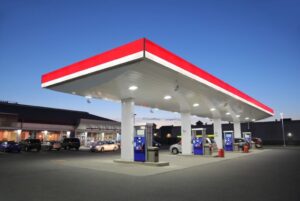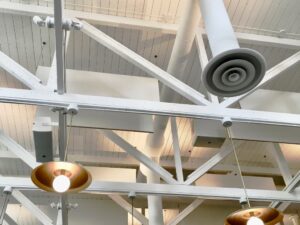Convenience stores are one of the most energy-demanding businesses to operate, second only to quick-serve restaurants. These businesses can consume up to 10 times more energy
per square foot than traditional commercial building spaces.
Convenience stores typically consume a significant amount of energy because they need to ensure their products stay fresh and

that they maintain a comfortable shopping environment for both customers and employees. With energy prices on the rise and environmental concerns becoming more pressing, it’s becoming more and more important for convenience stores to focus on energy efficiency. Controlling energy costs can feel difficult but, here are five easy ways convenience stores can save energy.
1. Employ an Energy Management System
The largest contributors to a convenience store’s electric bills are typically refrigeration, lighting, and HVAC usage. According to the National Association for Convenience and Fuel Retailing, refrigeration usage alone accounts for up to 40% of the total energy cost in a convenience store.
One of the most effective ways for convenience stores to reduce energy consumption and take control of energy-using assets is to install an energy management system (EMS). EMSs are designed to monitor and control a building’s energy usage, including HVAC systems, lighting, and other electrical equipment. By using an EMS, convenience store owners and facility managers can identify areas of energy waste and take steps to improve efficiency. For example, an EMS can automatically adjust the temperature and lighting levels based on occupancy or time of day, reducing energy waste and cutting costs. An EMS also monitors HVAC health and allows companies to implement predictive maintenance.
Learn more about how your convenience store can save energy and money with GridPoint’s EMS.
2. Use Predictive Maintenance
Predictive maintenance is a technique that uses condition-monitoring tools and techniques to monitor the performance of a structure or a piece of equipment during operation.
Preventive maintenance is a common practice in the convenience store industry, but it’s not always effective. Predictive maintenance, on the other hand, uses data analytics and machine learning to predict equipment failure before it happens. This approach can help convenience stores reduce downtime and extend the lifespan of their equipment, leading to significant energy savings.
Predictive maintenance connects your equipment to a software program using sensor data. This connection allows for direct monitoring of the performance of the asset. As it monitors, smart technology collects enough data to predict when a failure might occur, allowing you to find the least costly and disruptive time to take a part offline for repair. Performed in real-time, predictive maintenance allows facility managers to have instant insight into the status of their operations.
Because predictive maintenance addresses problems before appliances stop working, it can save convenience stores 8%-12% over preventive maintenance, and up to 40% over reactive maintenance. Predictive maintenance gives you the time to order parts, address maintenance needs, and, ultimately, extend the life of existing appliances, eliminating the need to purchase new machines ultimately saving you energy and money.
Read Blog: Facility Maintenance: The Difference between Reactive, Preventative, and Predictive
3. Use Temperature Setpoints
Temperature control is critical in convenience stores, but many owners may not realize that even a small change in temperature can make a big difference in energy consumption. By setting temperature setpoints just a few degrees higher in the summer and a few degrees lower in the winter, convenience store owners can significantly reduce their energy usage without affecting customer comfort.
4. Put Lighting on a Schedule
Lighting can account for a significant portion of a convenience store’s energy consumption. By putting lighting on a schedule, owners can ensure that lights are only on when they’re needed. For example, lights can be set to turn on when the store opens and turn off when it closes, reducing energy waste and cutting costs.
needed. For example, lights can be set to turn on when the store opens and turn off when it closes, reducing energy waste and cutting costs.
5. Participate in Demand Response
Demand response programs allow businesses to get paid to reduce their energy consumption during peak demand periods, such as hot summer afternoons. By participating in a demand response program, convenience stores can earn incentives for reducing their energy usage during these periods. This approach not only saves money but also helps stabilize the grid and reduces the likelihood of power outages.
GridPoint’s technology uses customized curtailment strategies to slowly lower temperatures or adjust schedules automatically before an event is called. That way, there is little to no impact on customer or site comfort. With very little effort, you can get payments, financial rebates, and credits. One GridPoint customer earned an additional $50,000 through demand response rebates and incentives alone in 2019.
Find a Demand Response Program here.
Convenience stores have a great opportunity to reduce their energy consumption and save money by implementing energy-efficient practices. By using energy management systems, predictive maintenance, temperature setpoints, lighting schedules, and participating in demand response programs, convenience stores can significantly reduce their energy usage while maintaining customer comfort and product quality. These steps can also have a positive impact on the environment, and energy resilient communities.